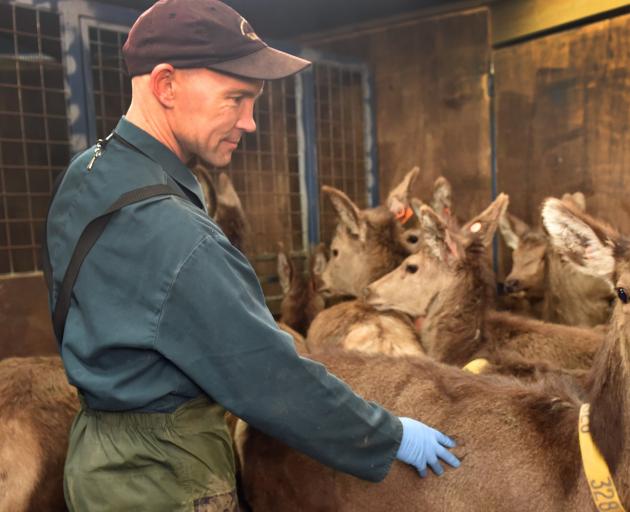
There were so many good people in the industry, all doing something productive for the economy, he said.
Mr Ward is a research associate based at AgResearch’s Invermay campus, near Mosgiel.
Originally from Riverton, he did not come from a farm — his father was a panelbeater and his mother a teacher — although his grandfather had a small farm and he spent weekends there.
After completing a chemistry degree at the University of Otago, he applied for a job at Invermay with the velvet antler team but was ‘‘runner-up’’.
About a week later, he was asked if he would be interested in a laboratory position in genomes, the DNA testing lab. When he joined, the lab was just getting started commercially in 1996. Initially, Mr Ward was extracting DNA from blood and then he moved into various roles, including service manager in the lab.
Most of the lab’s clientele were deer breeders, many of whom he got to know, both over the phone and in person, and what they were doing.
He also helped with research work because of the animal handling skills he gained from working on farms in his university holidays.
After seven years, a job came up with the deer systems team, with a genetics focus, and he had been in that team ever since, learning on the job.
He had been ‘‘very lucky’’ to have had a lot of good mentors and teachers and that those on the Invermay campus freely shared their knowledge.
His professional learning, particularly the New Zealand Society of Animal Production conferences, had helped to broaden his knowledge, he said.
Most of his work was directly related to a project called Hitting Targets for deer industry productivity.
His work could be quite varied. It might be in the office writing papers, doing data analysis or interpretation.
Mr Ward said he enjoyed the opportunity and challenge to try to communicate the science that was being done, and also to get that science understood and implemented appropriately within individual farm systems.
The deer industry had traditionally attracted some entrepreneurs and it was that side of things that ‘‘really keeps you on your toes — they expect you to be as entrepreneurial.’’
He could be in the deer yards at Invermay, or in a slaughter plant or, depending on the project, out on other farms.
While he had not spent a lot of time on other farmers’ farms in the past 12 months, during the previous four to five years, much time was spent on Haldon Station in the Mackenzie Basin, and Whiterock Station in the Rangitata Gorge, because they were collaborating on the deer progeny test.
He had also spent a lot of time on Landcorp farms.
His group at Invermay was starting a hill country water quality project that was going to involve a fair bit of time on five farms in the first year, and another five in the second year.
His involvement with that would ‘‘mostly be a pair of hands’’. A catchment study being undertaken at Invermay would also be tied in to that.
Mr Ward enjoyed getting out on farms — ‘‘I do all my best thinking either when I’m there working with the animals or talking to farmers.’’
He was a ‘‘big fan’’ of deer —working with them and, as a keen hunter, also eating venison.
Venison was a ‘‘wonderful, versatile product’’ and he never tired of eating it. He believed there were still massive opportunities for venison.
Mr Ward was ‘‘really hopeful’’ for the future of the deer industry. He hoped it had ‘‘bottomed out’’ in terms of core numbers, although it was very hard to know for sure.
Deer farmers were doing a ‘‘really good job’’ and there was potential to do better, he said.
For Mr Ward, the biggest challenge now was because hind numbers were so low and they were effectively a single birth animal, there would not be a rapid expansion.
But there were still opportunities for farmers to produce more product out of the same hind base by changing a few things in their system.
Hopefully the velvet market would be maintained and there would not a crash.
At the moment, he did not see that occurring because it had become a much more diversified market.
Credit was due to the deer industry’s Passion 2 Profit programme, particularly with the effort that had gone into diversifying the venison market.
